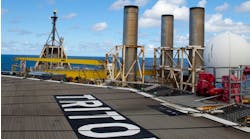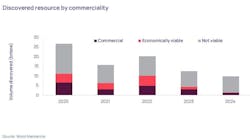Offshore staff
STAVANGER, Norway -- Production has started at the Gjøa oil and gas field in the northern part of the Norwegian North Sea. Statoil operated the development, with GDF Suez Norge taking charge for production.
Øystein Michelsen, Statoil’s executive vice president for Exploration & Production Norway, said the Gjoa semisubmersible platform and export facilities would serve as a hub for future developments in the area.
One of these, the Vega gas satellite, is due onstream soon. This has been developed with subsea installations tied back to Gjøa.
“Oil and gas are set to flow from Gjøa for at least 15 years to come,” says Michelsen. “However, we’ve seen that technology advances and the recovery factor constantly improves. There are also openings for further development in the area, so the field’s platform and infrastructure has been designed for a producing life of at least 30 years.”
Bringing Gjøa on stream marks the completion of an extensive development job for Statoil, notes project director Kjetil Digre.
Gjøa is named after the ship used by Norwegian polar explorer Roald Amundsen.
According to Statoil, the platform is the world’s first production floater powered directly from land. Electricity is transmitted through a 100-km (62-mi) cable from Mongstad north of Bergen.
This is designed to cut carbon emissions on the field by around 210,000 metric tons/yr (231,485 tons/yr). It is the second Norwegian offshore installation powered in this way, after Troll A, also developed by Statoil.
Fabrication of the platform and associated infrastructure started in 2007. The development around Gjøa/Vega cost about NOK 40 billion ($6.88 billion) and was completed on schedule.
Oil from Gjøa will be piped to Mongstad via the Troll II line, while gas flows through the UK’s Flags trunkline system to St Fergus in the UK.
11/08/2010


